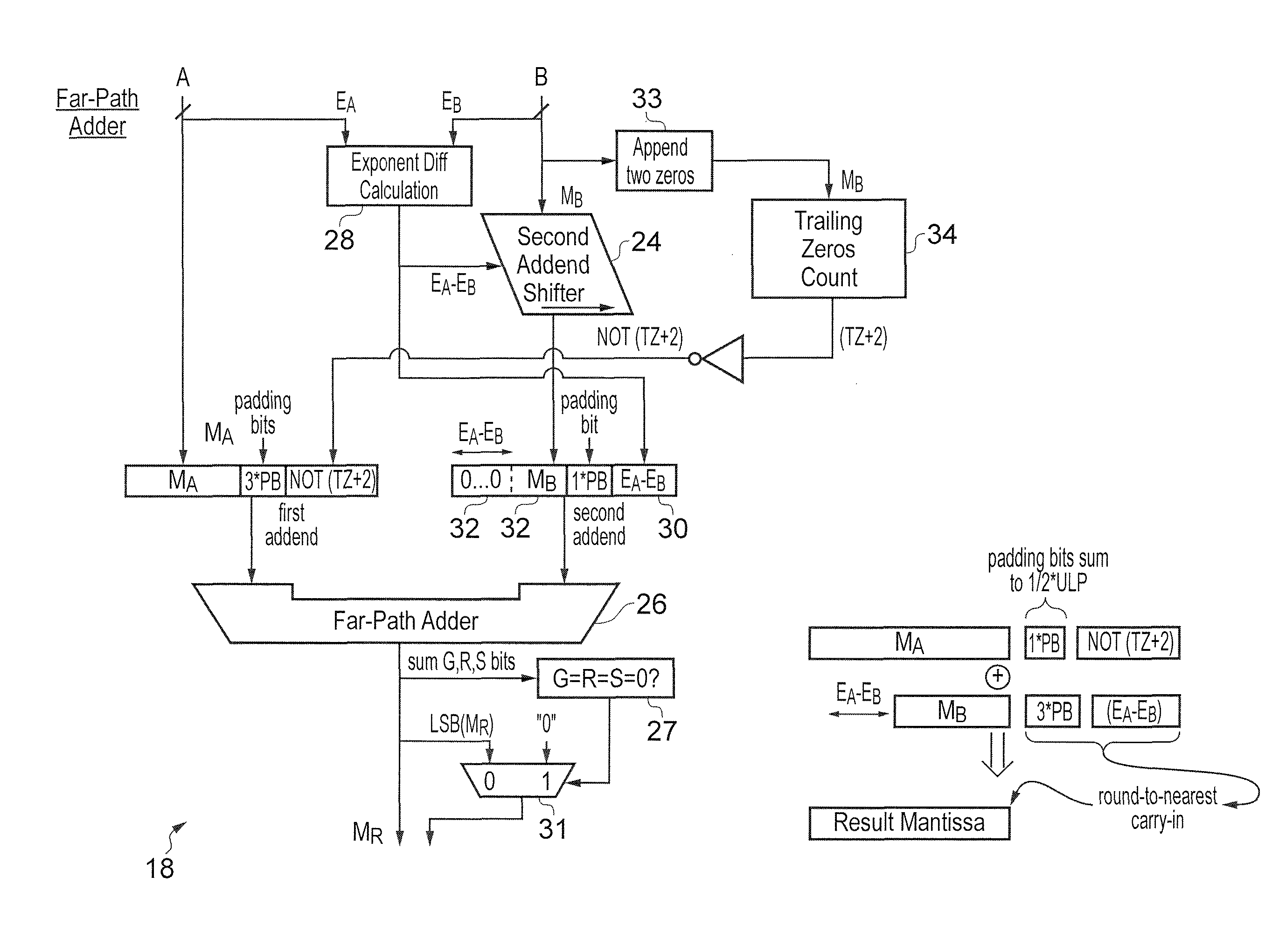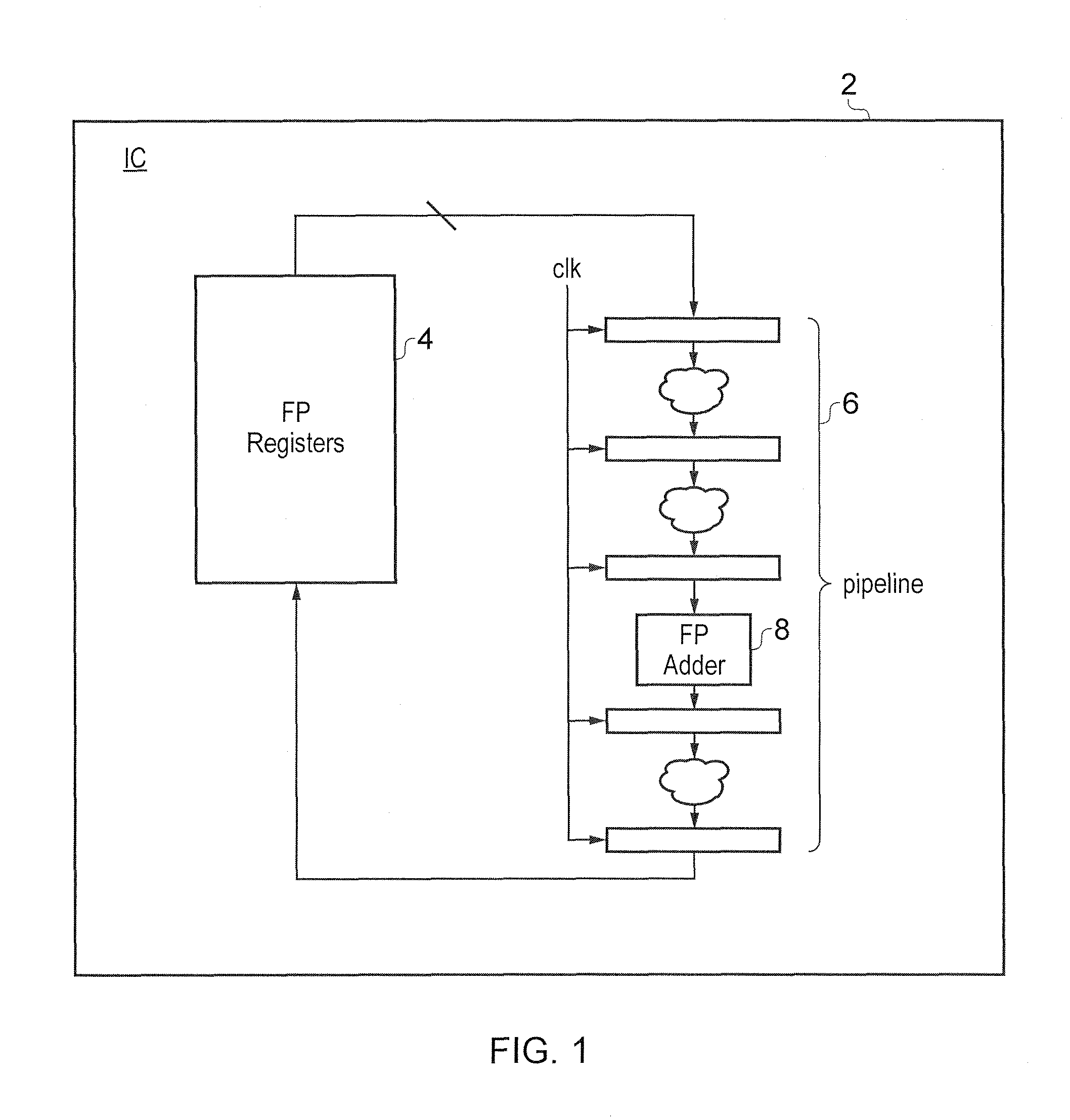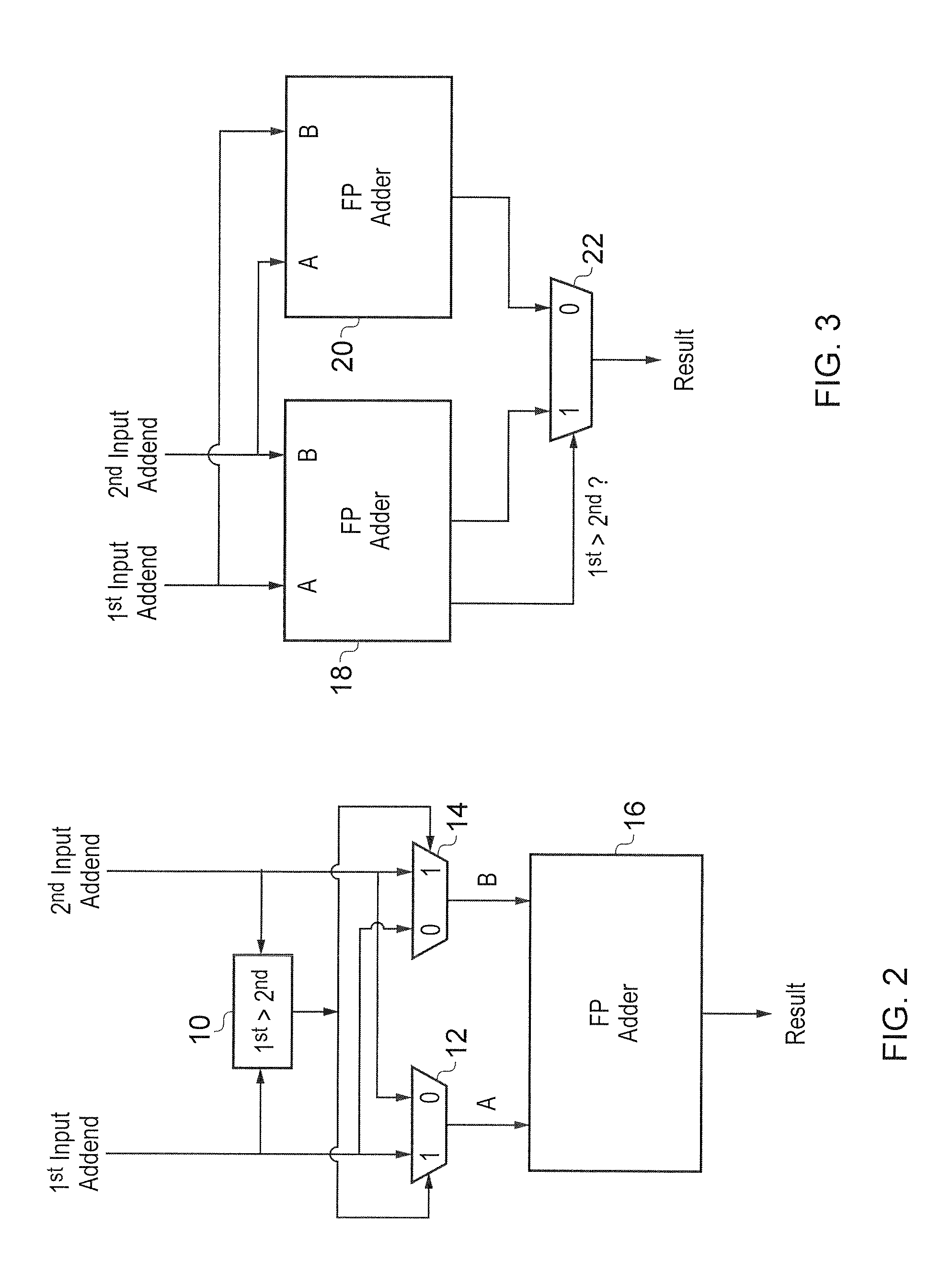Floating-point adder
a floating point adder and adder technology, applied in the field of data processing systems, can solve the problems of loss of precision, disadvantageous degree of latency in the processing path, and reduce the maximum operating clock frequency that may be used, and achieve the effect of reducing latency and reducing latency
- Summary
- Abstract
- Description
- Claims
- Application Information
AI Technical Summary
Benefits of technology
Problems solved by technology
Method used
Image
Examples
Embodiment Construction
[0059]FIG. 1 schematically illustrates an integrated circuit 2 including a bank of floating point registers 4 for storing floating point numbers and a data processing pipeline 6 including a plurality of processing stages with at least one of the processing stages providing floating point adder circuitry 8. In accordance with conventional pipelining within data processing systems, the pipeline stages are driven by a common clock signal which controls the advancement of the result(s) of one processing stage to the next processing stage. Measures which can reduce the latency associated with the processing being performed at each processing stage are advantageous as they, for example, may permit a higher clock frequency to be used and accordingly achieve a higher amount of data processing within a given amount of time. Reduced latency may also increase the timing slack between processing stages which has the advantage of making the design more robust.
[0060]In floating point adder circui...
PUM
 Login to View More
Login to View More Abstract
Description
Claims
Application Information
 Login to View More
Login to View More - R&D
- Intellectual Property
- Life Sciences
- Materials
- Tech Scout
- Unparalleled Data Quality
- Higher Quality Content
- 60% Fewer Hallucinations
Browse by: Latest US Patents, China's latest patents, Technical Efficacy Thesaurus, Application Domain, Technology Topic, Popular Technical Reports.
© 2025 PatSnap. All rights reserved.Legal|Privacy policy|Modern Slavery Act Transparency Statement|Sitemap|About US| Contact US: help@patsnap.com



